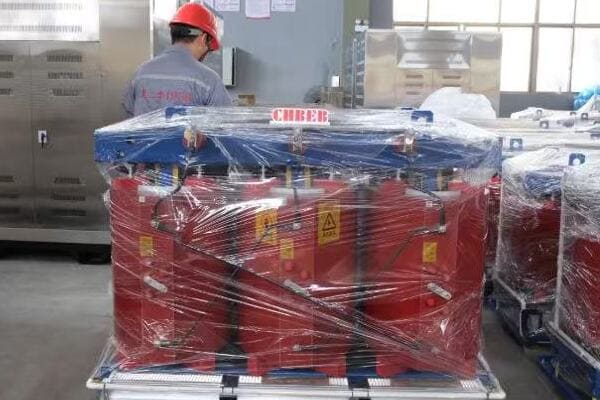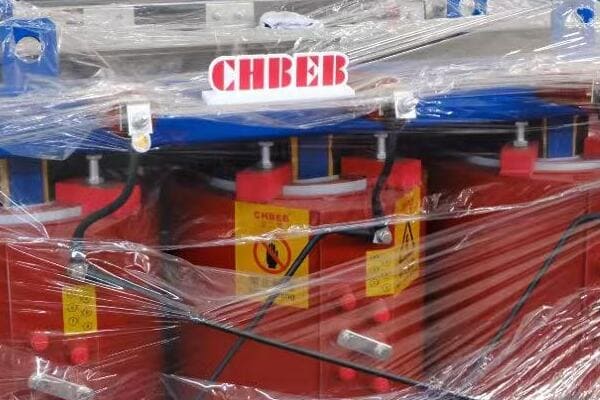Top 7 Use Cases for 3 Phase Distribution Transformers: Industry, Grid, and Clean Energy?
Are you struggling to understand where and why 3 phase distribution transformers are used in modern power systems? You’re not alone. Many engineers and project managers find themselves confused about the diverse applications of these crucial components. But what if you had a clear guide to the top use cases, helping you make informed decisions for your projects?
3 phase distribution transformers are essential for efficient power delivery in industrial, utility, and renewable energy systems. This guide outlines 7 real-world use cases—helping engineers and buyers understand where and why these transformers are deployed, from factories to wind farms.
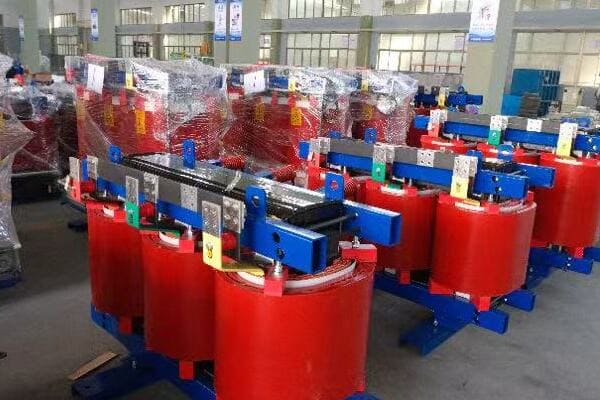
In this comprehensive guide, I’ll walk you through the top 7 use cases for 3 phase distribution transformers. Whether you’re working on an industrial facility, a renewable energy project, or a commercial complex, this article will provide you with valuable insights into how these transformers are applied across various sectors.
What Is a 3 Phase Distribution Transformer?
Have you ever wondered how electricity is efficiently distributed to power large industrial equipment or entire neighborhoods? This is where 3 phase distribution transformers come into play. But what exactly are they, and how do they differ from other types of transformers?
A 3 phase distribution transformer is an electrical device that converts high-voltage electricity into lower, usable voltages while maintaining three separate phases of power. Unlike single-phase transformers, it handles three alternating currents, providing more efficient power transmission and distribution for larger loads in industrial, commercial, and utility applications.
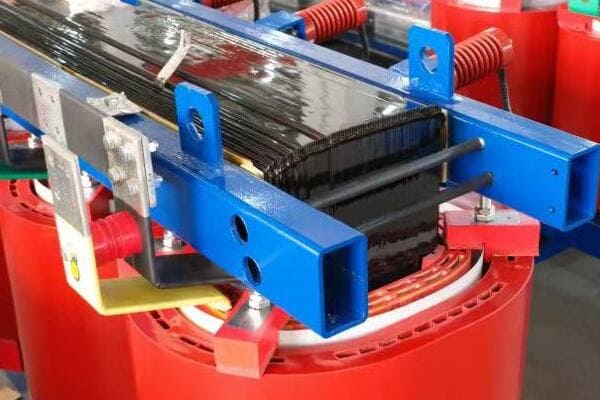
Understanding 3 Phase Distribution Transformers
Let’s break down the key aspects of these transformers:
- Basic Structure and Function
- Comparison with Single-Phase Transformers
- Key Advantages in Power Distribution
Basic Structure and Function
A 3 phase distribution transformer typically consists of:
- Three sets of primary and secondary windings
- A magnetic core (usually made of silicon steel)
- Insulation materials (oil or dry-type)
- Cooling system (natural air, forced air, or oil)
I remember my first encounter with a 3 phase transformer during an industrial plant upgrade. The complexity of its internal structure was fascinating, especially how the three phases were intricately wound around the core.
Comparison with Single-Phase Transformers
Here’s how 3 phase transformers differ from single-phase units:
| Aspect | 3 Phase Transformer | Single-Phase Transformer |
|---|---|---|
| Number of Windings | Three sets | One set |
| Power Capacity | Higher for same size | Lower for same size |
| Efficiency | Generally higher | Lower for large loads |
| Application | Industrial, commercial | Residential, small commercial |
Key Advantages in Power Distribution
3 phase transformers offer several benefits:
- More efficient power transmission
- Better suited for large, balanced loads
- Reduced material costs for high-power applications
- Smoother power delivery with less pulsation
During a recent project for a manufacturing facility, the use of a 3 phase transformer allowed us to significantly reduce cable sizes and improve overall system efficiency compared to multiple single-phase units.
Understanding these basics is crucial for appreciating the diverse applications of 3 phase distribution transformers. As we explore the various use cases, keep in mind that the unique characteristics of these transformers make them indispensable in modern power systems.
Why 3 Phase Transformers Are Essential in Modern Power Systems?
Have you ever considered why 3 phase transformers are so prevalent in today’s power infrastructure? Their importance goes beyond just converting voltages. But what makes them so crucial in modern power systems, and how do they contribute to the efficiency and reliability of our electrical grids?
3 phase transformers are essential in modern power systems due to their efficiency in handling large loads, ability to balance power distribution, and compatibility with industrial equipment. They enable more effective power transmission over long distances, support renewable energy integration, and provide the flexibility needed for complex power networks in urban and industrial settings.
Key Roles of 3 Phase Transformers in Modern Power Systems
Let’s explore the critical functions these transformers serve:
- Efficient Power Transmission and Distribution
- Load Balancing and Stability
- Support for Industrial and Commercial Applications
- Integration of Renewable Energy Sources
- Flexibility in Power System Design
Efficient Power Transmission and Distribution
3 phase transformers excel in power transmission:
- Reduce transmission losses over long distances
- Allow for higher voltage transmission, reducing current and cable sizes
- Provide more power capacity in a smaller footprint
I once worked on a project upgrading a regional power distribution network. The switch to higher capacity 3 phase transformers significantly reduced transmission losses, resulting in notable energy savings for the utility company.
Load Balancing and Stability
These transformers play a crucial role in maintaining system stability:
- Distribute loads evenly across three phases
- Minimize voltage fluctuations and harmonics
- Improve overall power quality
During a recent industrial park development, the use of 3 phase transformers was key in managing the diverse and fluctuating loads from various factories, ensuring stable power supply across the entire complex.
Support for Industrial and Commercial Applications
3 phase transformers are ideal for heavy-duty applications:
- Power large industrial motors and equipment
- Support high-density commercial and data center loads
- Provide the right voltage levels for diverse industrial processes
I recall a project for a large automotive manufacturing plant where 3 phase transformers were essential in powering everything from welding robots to assembly line conveyors, showcasing their versatility in industrial settings.
Integration of Renewable Energy Sources
In the growing field of renewable energy, these transformers are key:
- Facilitate the integration of wind and solar farms into the grid
- Handle the variable nature of renewable energy generation
- Support bi-directional power flow in smart grid applications
Here’s a quick comparison of transformer applications in traditional vs. renewable energy:
| Aspect | Traditional Power | Renewable Energy |
|---|---|---|
| Power Flow | Mostly unidirectional | Often bidirectional |
| Load Predictability | Relatively stable | Variable |
| Voltage Regulation | Simpler | More complex |
| Harmonics Management | Less critical | Highly important |
Flexibility in Power System Design
3 phase transformers offer design flexibility:
- Allow for various connection configurations (Delta, Wye)
- Support different grounding schemes
- Facilitate voltage regulation through tap changing
In my experience, this flexibility has been crucial in adapting power systems to diverse needs. For instance, in a recent smart city project, the ability to reconfigure transformer connections allowed us to optimize the power distribution for different zones with varying load characteristics.
Key takeaways on the importance of 3 phase transformers:
- They are fundamental to efficient long-distance power transmission
- Their load balancing capabilities are crucial for system stability
- They are indispensable in powering industrial and commercial facilities
- Their flexibility makes them ideal for integrating renewable energy sources
- They provide the adaptability needed in modern, complex power networks
As we delve into specific use cases, keep in mind how these essential characteristics of 3 phase transformers make them suitable for a wide range of applications across various industries and settings.
Use Case 1: Industrial Manufacturing Plants (High kVA Loads)?
Are you grappling with the power distribution challenges in large industrial settings? Industrial manufacturing plants, with their high kVA loads, present unique demands on electrical systems. But how do 3 phase distribution transformers meet these challenges, and why are they the go-to choice for heavy industrial applications?
3 phase distribution transformers are crucial in industrial manufacturing plants due to their ability to handle high kVA loads efficiently. They provide stable power for heavy machinery, support three-phase motors common in industrial equipment, and offer the flexibility to manage diverse load types. These transformers ensure reliable operation, minimize downtime, and support the high-power demands of industrial processes.
3 Phase Transformers in Industrial Manufacturing
Let’s explore how these transformers are applied in industrial settings:
- Handling High Power Demands
- Supporting Diverse Industrial Equipment
- Ensuring Reliability and Continuity
- Energy Efficiency in Industrial Operations
Handling High Power Demands
Industrial plants often require massive amounts of power:
- Typical capacities range from 1000 kVA to 5000 kVA or more
- Ability to handle sustained high loads without overheating
- Support for peak load demands during production spikes
I once worked on a project for a steel manufacturing plant where we installed a 7500 kVA transformer. Its ability to handle the enormous power demands of electric arc furnaces was crucial for the plant’s operations.
Supporting Diverse Industrial Equipment
3 phase transformers are ideal for powering various industrial machinery:
- Large three-phase motors in production lines
- Welding equipment and CNC machines
- Heating and cooling systems for industrial processes
During a recent automotive factory upgrade, the 3 phase transformer we installed efficiently powered everything from robotic welding arms to massive stamping presses, showcasing its versatility.
Ensuring Reliability and Continuity
Reliability is paramount in industrial settings:
- Robust design to withstand industrial environments
- Often equipped with advanced monitoring systems
- Redundancy options to prevent production downtime
I recall a project where implementing a parallel transformer setup in a chemical plant ensured continuous operation even during maintenance periods, significantly reducing the risk of costly production halts.
Energy Efficiency in Industrial Operations
Energy efficiency is a growing concern in industry:
- High-efficiency transformers reduce operational costs
- Ability to handle harmonic loads common in industrial settings
- Support for power factor correction equipment
Here’s a comparison of transformer features for industrial applications:
| Feature | Standard Transformer | Industrial-Grade Transformer |
|---|---|---|
| Capacity | Up to 2000 kVA | 2000 kVA and above |
| Cooling | ONAN/AN | ONAN/ONAF |
| Short Circuit Strength | Standard | Enhanced |
| Monitoring | Basic | Advanced with real-time data |
| Harmonic Handling | Limited | Designed for high harmonic loads |
Key considerations for industrial transformer applications:
- Accurate load calculation including future expansion plans
- Environmental factors (temperature, dust, vibration)
- Maintenance accessibility in industrial layouts
- Integration with plant-wide power management systems
- Compliance with industry-specific regulations and standards
In my experience, selecting the right transformer for industrial applications is crucial for operational efficiency and reliability. I remember a case where an undersized transformer in a manufacturing plant led to frequent downtime and production losses. After upgrading to a properly specified 3 phase transformer, the plant saw a significant improvement in productivity and energy efficiency.
As we continue to explore other use cases, keep in mind how the robust nature and high-capacity capabilities of 3 phase transformers make them indispensable in industrial settings. Their ability to handle the demanding loads of manufacturing plants is a testament to their importance in modern industrial power systems.
Use Case 2: Utility Substations for Urban and Suburban Power Distribution?
Are you curious about how electricity is efficiently distributed across cities and suburbs? Utility substations play a crucial role in this process, and 3 phase distribution transformers are at the heart of these operations. But how exactly are these transformers used in urban and suburban power distribution, and why are they so important?
In utility substations, 3 phase distribution transformers are essential for stepping down high transmission voltages to levels suitable for local distribution. They handle large power capacities, typically ranging from 5 MVA to 50 MVA, and are crucial for maintaining voltage stability across urban and suburban areas. These transformers enable efficient power distribution, support load management, and facilitate integration with smart grid technologies.
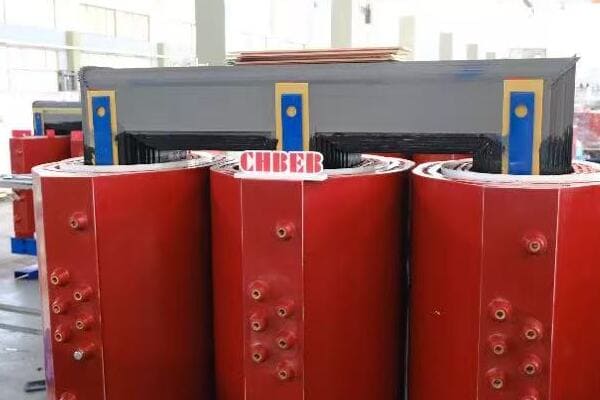
3 Phase Transformers in Utility Substations
Let’s explore the key roles of these transformers in urban and suburban power distribution:
- Voltage Step-Down for Local Distribution
- Load Management and Flexibility
- Reliability and Redundancy
- Integration with Smart Grid Technologies
- Environmental and Safety Considerations
Voltage Step-Down for Local Distribution
Utility substations use 3 phase transformers to:
- Step down high transmission voltages (e.g., 138 kV) to distribution levels (e.g., 13.8 kV)
- Provide appropriate voltage levels for different urban zones
- Maintain voltage stability across the distribution network
I once worked on a substation upgrade project where we replaced older transformers with modern 3 phase units. The new transformers significantly improved voltage regulation across a rapidly growing suburban area, reducing complaints about voltage fluctuations.
Load Management and Flexibility
These transformers offer flexibility in managing urban power demands:
- Ability to handle varying loads throughout the day
- Support for load tap changing to adjust voltage levels
- Capacity to manage both residential and commercial loads
During a recent smart city project, the implementation of advanced 3 phase transformers with on-load tap changers allowed for dynamic voltage adjustment, optimizing power distribution efficiency across different urban zones.
Reliability and Redundancy
Reliability is critical in urban power distribution:
- Transformers often configured in parallel for redundancy
- Equipped with advanced protection and monitoring systems
- Designed for quick isolation and maintenance to minimize outages
I recall a case where a dual transformer setup in a suburban substation prevented a widespread blackout when one unit failed. The redundancy ensured continuous power supply while repairs were made.
Integration with Smart Grid Technologies
Modern utility substations leverage smart grid capabilities:
- Transformers equipped with digital monitoring and control systems
- Support for bi-directional power flow (important for renewable integration)
- Data collection for predictive maintenance and load forecasting
Here’s a comparison of traditional vs. smart grid-ready transformers:
| Feature | Traditional Transformer | Smart Grid-Ready Transformer |
|---|---|---|
| Monitoring | Basic analog gauges | Advanced digital sensors |
| Communication | Limited | Real-time data transmission |
| Control | Manual | Remote and automated |
| Power Flow | Unidirectional | Bi-directional capable |
| Efficiency Tracking | Periodic manual checks | Continuous real-time monitoring |
Environmental and Safety Considerations
Urban and suburban installations require special attention to:
- Noise reduction (important in residential areas)
- Oil containment systems for environmental protection
- Compact designs to minimize substation footprint
- Fire safety measures, especially in densely populated areas
Key considerations for utility substation transformers:
- Accurate load forecasting for proper capacity planning
- Compatibility with existing distribution infrastructure
- Scalability to accommodate future urban growth
- Environmental impact and community considerations
- Integration capabilities with emerging smart grid technologies
In my experience, the selection and implementation of 3 phase transformers in utility substations can significantly impact the quality and reliability of urban power distribution. I’ve seen how well-planned transformer installations can lead to improved power quality, reduced outages, and better overall energy management in urban areas.
As we continue to explore other use cases, remember that the role of 3 phase transformers in utility substations is fundamental to the reliable and efficient power distribution we often take for granted in our cities and suburbs. Their ability to handle large power capacities while providing the flexibility needed in urban environments makes them indispensable in modern power distribution systems.
Use Case 3: Renewable Energy Projects (Solar Farms, Wind Turbines)?
Are you wondering how renewable energy sources like solar farms and wind turbines are integrated into the power grid? The role of 3 phase distribution transformers in these green energy projects is crucial, but often overlooked. How do these transformers adapt to the unique challenges of renewable energy systems, and why are they essential for the clean energy revolution?
In renewable energy projects, 3 phase distribution transformers are vital for converting the variable output of solar panels and wind turbines into grid-compatible power. They handle fluctuating loads, support bi-directional power flow, and often operate in harsh environments. These transformers are key to efficiently integrating renewable sources into the existing power grid, balancing voltage levels, and ensuring power quality.
3 Phase Transformers in Renewable Energy Systems
Let’s explore how these transformers are applied in renewable energy projects:
- Handling Variable Power Generation
- Voltage Step-Up for Grid Integration
- Bi-Directional Power Flow Management
- Environmental Adaptability
- Smart Grid Integration
Handling Variable Power Generation
Renewable sources produce fluctuating power outputs:
- Transformers must handle rapid changes in load
- Designed to operate efficiently at varying power levels
- Often equipped with advanced voltage regulation systems
I once worked on a large wind farm project where the transformers were specially designed to handle the variable output of wind turbines. Their ability to maintain stable voltage despite gusty conditions was crucial for consistent power delivery to the grid.
Voltage Step-Up for Grid Integration
Renewable energy systems typically generate at lower voltages:
- Solar panels produce DC power, converted to low-voltage AC
- Wind turbines generate relatively low AC voltages
- Transformers step up these voltages to grid-compatible levels
During a recent solar farm installation, we used a series of 3 phase transformers to step up the voltage from 400V at the inverter output to 33kV for grid connection. This efficient voltage transformation was key to minimizing transmission losses over long distances.
Bi-Directional Power Flow Management
Modern renewable energy systems often involve bi-directional power flow:
- Transformers support power flow to and from the grid
- Essential for systems with energy storage components
- Enables grid services like frequency regulation and voltage support
I recall a project where we implemented bi-directional transformers in a hybrid solar-storage system. This setup allowed the facility to both draw from and supply power to the grid, optimizing energy use and providing valuable grid support services.
Environmental Adaptability
Renewable energy installations often exist in challenging environments:
- Offshore wind farms require corrosion-resistant transformers
- Desert solar installations need heat-resistant designs
- Remote locations demand high reliability and low maintenance
Here’s a comparison of transformer features for different renewable energy applications:
| Feature | Solar Farm | Wind Farm (Onshore) | Wind Farm (Offshore) |
|---|---|---|---|
| Typical Capacity | 1-5 MVA | 2-5 MVA | 5-10 MVA |
| Cooling Method | ONAN/ONAF | ONAN/ONAF | OFAF/ODAF |
| Enclosure | Outdoor, dust-resistant | Outdoor, weather-resistant | Marine-grade, corrosion-resistant |
| Voltage Regulation | High (for inverter compatibility) | Moderate | High (for long-distance transmission) |
| Special Features | Harmonic mitigation | Vibration resistance | Compact design for nacelle installation |
Smart Grid Integration
Transformers in renewable energy systems are often at the forefront of smart grid technology:
- Equipped with advanced monitoring and communication systems
- Support real-time data exchange for grid management
- Enable dynamic response to grid conditions
In a recent smart grid project, we integrated IoT-enabled transformers in a large solar farm. These smart transformers provided real-time data on power quality and equipment health, allowing for predictive maintenance and optimized grid operations.
Key considerations for transformers in renewable energy projects:
- Accurate sizing to match the variable output of renewable sources
- Compatibility with inverters and other power electronics
- Ability to handle harmonics generated by power conversion equipment
- Robust design for often remote and harsh installation environments
- Integration capabilities with grid management and monitoring systems
In my experience, the success of renewable energy projects heavily depends on the proper selection and implementation of 3 phase transformers. I’ve seen how well-designed transformer systems can significantly improve the efficiency and reliability of renewable energy integration into the grid.
As we continue to explore other use cases, remember that the role of 3 phase transformers in renewable energy projects is not just about power conversion – it’s about enabling the transition to a cleaner, more sustainable energy future. Their ability to handle the unique challenges of renewable sources makes them a critical component in the ongoing evolution of our power systems.
Use Case 4: Commercial Complexes and Data Centers?
Are you grappling with the power distribution challenges in modern commercial complexes and data centers? These facilities have unique and demanding power requirements that can be daunting to manage. But how do 3 phase distribution transformers address these needs, and why are they crucial for ensuring reliable and efficient power in these critical environments?
In commercial complexes and data centers, 3 phase distribution transformers are essential for providing stable, efficient power distribution. They handle high-density loads, support critical equipment, and offer the reliability needed for continuous operations. These transformers are often designed for low noise, compact installation, and integration with backup power systems, making them ideal for urban commercial settings and high-uptime data center environments.

3 Phase Transformers in Commercial and Data Center Applications
Let’s explore how these transformers are applied in commercial and data center settings:
- Managing High-Density Power Loads
- Ensuring Reliability and Redundancy
- Noise Reduction and Compact Design
- Integration with Backup and UPS Systems
- Energy Efficiency and Monitoring
Managing High-Density Power Loads
Commercial complexes and data centers have intense power needs:
- Typical capacities range from 500 kVA to 2500 kVA
- Ability to handle concentrated loads in server rooms
- Support for diverse loads from HVAC to IT equipment
I once worked on a project for a major financial institution’s data center, where we implemented K-20 rated transformers with integrated harmonic filters. This solution effectively managed the high levels of harmonics generated by the server loads, ensuring clean power and reducing the risk of equipment malfunction due to power quality issues.
Ensuring Reliability and Redundancy
Continuous operation is critical in these environments:
- Often configured in N+1 or 2N redundancy setups
- Equipped with advanced monitoring and protection systems
- Designed for quick maintenance and minimal downtime
During a recent hospital modernization project, we designed a power system where the transformers were closely integrated with the UPS and emergency generator systems. This setup ensured that critical areas like operating rooms and intensive care units had absolutely no interruption in power supply, even during utility power failures.
Noise Reduction and Compact Design
Commercial and urban settings require special considerations:
- Low-noise designs for office environments
- Compact configurations for space-constrained urban buildings
- Often dry-type transformers for indoor installations
In a high-rise office building project, we utilized ultra-low noise, cast resin transformers. Their quiet operation and fire-resistant properties made them ideal for installation near occupied areas, maximizing usable space in the expensive urban real estate.
Integration with Backup and UPS Systems
Seamless integration with backup power systems is crucial:
- Compatibility with diesel generators and UPS systems
- Fast response to load changes during power source transitions
- Coordination with static transfer switches for uninterrupted power flow
Here’s a comparison of transformer features for commercial and data center applications:
| Feature | Commercial Complex | Data Center |
|---|---|---|
| Typical Capacity | 750-2000 kVA | 1000-2500 kVA |
| Cooling Method | AN/AF (Dry-type) | AN/AF or KNAN (Liquid-filled) |
| Noise Level | Ultra-low | Low to moderate |
| Redundancy | N+1 | 2N or 2N+1 |
| Special Features | Low fire risk | K-factor rated, harmonic mitigation |
Energy Efficiency and Monitoring
Modern commercial and data center transformers focus on efficiency:
- High-efficiency designs to reduce operational costs
- Real-time monitoring for load management and maintenance
- Integration with building management systems for optimized energy use
In a recent data center project, we implemented smart transformers with real-time monitoring capabilities. This allowed the facility managers to track power usage effectiveness (PUE) in real-time and make data-driven decisions to improve energy efficiency.
Key considerations for commercial and data center transformer applications:
- Accurate load profiling and future growth estimation
- Compliance with stringent reliability and uptime requirements
- Integration with complex power distribution and backup systems
- Adherence to noise and environmental regulations in urban settings
- Scalability to accommodate rapid changes in technology and power demands
In my experience, the selection of appropriate 3 phase transformers for commercial complexes and data centers is critical to the overall performance and reliability of these facilities. I’ve seen how well-designed transformer systems can significantly enhance operational efficiency, reduce downtime risks, and provide the flexibility needed in these dynamic environments.
As we continue to explore other use cases, remember that the role of 3 phase transformers in commercial and data center applications goes beyond simple power distribution. They are integral to creating resilient, efficient, and adaptable power systems that support the critical operations of modern businesses and digital infrastructure.
Use Case 5: Oil & Gas or Mining Installations (Remote and Harsh Environments)?
Have you ever wondered how power is reliably supplied to remote oil rigs or mining operations in extreme conditions? These challenging environments present unique obstacles for power distribution. But how do 3 phase distribution transformers adapt to these harsh settings, and why are they crucial for maintaining operations in the oil, gas, and mining industries?
In oil & gas and mining installations, 3 phase distribution transformers are engineered to withstand extreme conditions while providing reliable power. They are designed for high temperature tolerance, corrosion resistance, and often explosion-proof operation. These transformers support critical equipment in remote locations, handle variable loads, and are built for minimal maintenance, ensuring continuous operations in harsh industrial environments.
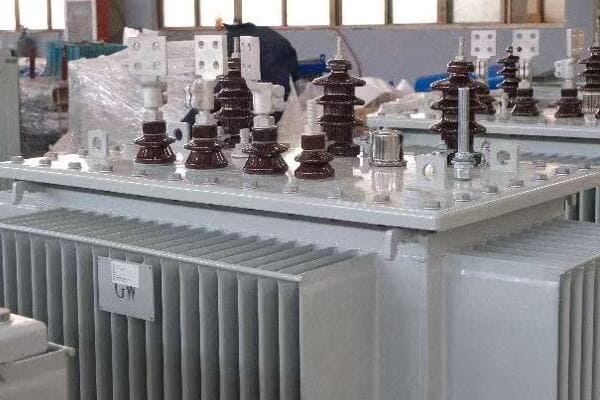
3 Phase Transformers in Oil & Gas and Mining Applications
Let’s explore how these transformers are applied in these demanding industries:
- Withstanding Harsh Environmental Conditions
- Supporting Critical Operations in Remote Locations
- Handling Variable and Specialized Loads
- Ensuring Safety in Hazardous Areas
- Minimizing Maintenance Requirements
Withstanding Harsh Environmental Conditions
These transformers are built to endure extreme conditions:
- Designed for wide temperature ranges (-40°C to +55°C or more)
- Corrosion-resistant materials for marine or chemical environments
- Robust enclosures to protect against dust, sand, and moisture
I once worked on a project for an offshore oil platform where we implemented specially designed transformers with enhanced corrosion protection and high-grade insulation. These units successfully operated in the harsh, salt-laden marine environment for years without significant degradation.
Supporting Critical Operations in Remote Locations
Reliability is paramount in remote installations:
- High capacity units to support entire operations (typically 1-10 MVA)
- Often the sole power source for critical equipment
- Designed for extended periods of continuous operation
During a recent mining project in a remote desert location, we installed transformers with advanced cooling systems and redundant components. This ensured uninterrupted power supply for the mining operations, even under extreme heat and with limited access to immediate technical support.
Handling Variable and Specialized Loads
Oil & gas and mining operations have unique power needs:
- Support for heavy-duty motors in drilling and excavation equipment
- Ability to handle highly inductive loads from large pumps and compressors
- Flexibility to manage varying load profiles as operations change
In an oil field electrification project, we implemented transformers with on-load tap changers to manage the varying voltage requirements of different extraction processes. This flexibility was crucial in optimizing power distribution across the field’s diverse operations.
Ensuring Safety in Hazardous Areas
Safety is a top priority in these industries:
- Explosion-proof designs for areas with flammable gases or dust
- Integration with emergency shutdown systems
- Compliance with industry-specific safety standards (e.g., API, ATEX)
Here’s a comparison of transformer features for oil & gas and mining applications:
| Feature | Oil & Gas (Offshore) | Oil & Gas (Onshore) | Mining |
|---|---|---|---|
| Typical Capacity | 2-5 MVA | 1-10 MVA | 2-15 MVA |
| Enclosure | Marine-grade, explosion-proof | Weather-resistant, explosion-proof | Dust-resistant, ruggedized |
| Cooling Method | KNAN/KNAF | ONAN/ONAF | ONAN/ONAF |
| Special Features | Corrosion resistance, compact design | High temperature tolerance | Vibration resistance, mobile options |
| Safety Certifications | API, ATEX, IECEx | API, ATEX, IECEx | Mining-specific (e.g., MA, Exd) |
Minimizing Maintenance Requirements
Given the remote locations, low maintenance is crucial:
- Robust designs with extended service intervals
- Self-monitoring capabilities for predictive maintenance
- Modular components for easier replacement when necessary
In a recent project for a remote gas processing facility, we implemented transformers with advanced diagnostic systems. These units could self-monitor their condition and predict potential issues, allowing for planned maintenance during scheduled shutdowns and minimizing unexpected outages.
Key considerations for oil & gas and mining transformer applications:
- Rigorous environmental protection suited to the specific installation location
- Compliance with industry-specific safety and performance standards
- Ability to handle specialized loads and operational profiles
- Integration with site-wide power management and safety systems
- Long-term reliability with minimal on-site maintenance requirements
In my experience, the success of power distribution in these challenging industries heavily depends on the proper selection and implementation of rugged, reliable 3 phase transformers. I’ve seen how well-engineered transformer systems can significantly enhance operational continuity and safety in some of the world’s most demanding industrial environments.
As we continue to explore other use cases, remember that the role of 3 phase transformers in oil & gas and mining applications goes beyond mere power conversion. They are critical components in ensuring the safety, efficiency, and reliability of operations in some of the most challenging and remote locations on Earth.
Use Case 6: Infrastructure Projects (Railways, Airports, Stadiums)?
Are you curious about how large-scale infrastructure projects like railways, airports, and stadiums manage their complex power needs? These facilities require robust and flexible power distribution systems to function efficiently. But how do 3 phase distribution transformers fit into these diverse and demanding applications, and why are they essential for modern infrastructure?
In infrastructure projects such as railways, airports, and stadiums, 3 phase distribution transformers play a crucial role in providing reliable and efficient power. They handle high-capacity loads, support critical safety systems, and offer the flexibility needed for varying demand. These transformers are often designed for outdoor installation, noise reduction, and integration with sophisticated power management systems, making them ideal for large-scale public facilities.
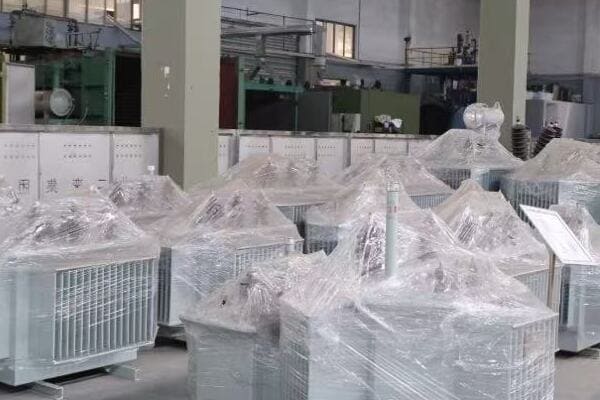
3 Phase Transformers in Infrastructure Applications
Let’s explore how these transformers are applied in major infrastructure projects:
- Managing High-Capacity and Variable Loads
- Ensuring Safety and Reliability
- Adapting to Unique Environmental Challenges
- Integration with Smart Infrastructure Systems
- Supporting Sustainable Operations
Managing High-Capacity and Variable Loads
Infrastructure projects have diverse power requirements:
- Railways: Traction power and station facilities (typically 5-40 MVA)
- Airports: Terminal operations, navigation systems, and ground support (3-20 MVA)
- Stadiums: Event lighting, HVAC, and broadcast equipment (2-10 MVA)
I once worked on a major airport expansion project where we implemented a series of 15 MVA transformers. These units were crucial in managing the varying loads between peak travel times and off-hours, ensuring efficient power distribution across all airport operations.
Ensuring Safety and Reliability
Continuous and safe operation is paramount in public infrastructure:
- Redundant systems for critical applications
- Integration with emergency power systems
- Compliance with stringent safety standards and regulations
During a recent high-speed rail project, we designed a power distribution system with N+1 redundancy for traction power substations. This setup ensured uninterrupted rail service even during transformer maintenance or unexpected failures.
Adapting to Unique Environmental Challenges
Infrastructure transformers often face specific environmental conditions:
- Outdoor installations with weather-resistant designs
- Noise reduction features for urban environments
- Compact designs for space-constrained areas
In a stadium renovation project, we utilized ultra-low noise, compact transformers. Their design allowed for installation near spectator areas without compromising the audio experience or taking up valuable space.
Integration with Smart Infrastructure Systems
Modern infrastructure relies on intelligent power management:
- Real-time monitoring and control capabilities
- Integration with facility-wide management systems
- Support for energy efficiency initiatives
Here’s a comparison of transformer features for different infrastructure applications:
| Feature | Railways | Airports | Stadiums |
|---|---|---|---|
| Typical Capacity | 5-40 MVA | 3-20 MVA | 2-10 MVA |
| Cooling Method | ONAN/ONAF | ONAN/ONAF | AN/AF (Often dry-type) |
| Special Features | Traction load handling | High reliability for critical systems | Event-based load management |
| Environmental Considerations | Vibration resistance | EMI shielding | Low noise operation |
| Integration | With railway signaling systems | With flight information systems | With event management systems |
Supporting Sustainable Operations
Infrastructure projects increasingly focus on sustainability:
- High-efficiency transformer designs to reduce energy losses
- Support for renewable energy integration (e.g., solar panels on airport terminals)
- Compatibility with energy storage systems for load balancing
In a recent modernization project for a major train station, we implemented smart transformers with real-time efficiency monitoring. This system allowed for optimal load distribution and integration with the station’s rooftop solar installation, significantly reducing overall energy consumption.
Key considerations for infrastructure transformer applications:
- Accurate load profiling to handle both regular and peak demands
- Compliance with specific industry regulations (e.g., aviation, rail safety)
- Adaptability to future expansion and technology upgrades
- Integration capabilities with complex facility management systems
- Durability and reliability under continuous, high-stress operations
In my experience, the selection and implementation of appropriate 3 phase transformers for infrastructure projects is critical to the overall functionality and efficiency of these facilities. I’ve seen how well-designed transformer systems can significantly enhance operational reliability, improve energy efficiency, and provide the flexibility needed to adapt to changing demands in these dynamic environments.
For instance, in a recent airport expansion project, we faced the challenge of integrating new power distribution systems with existing infrastructure while minimizing disruptions to daily operations. By carefully selecting modular, smart transformers with advanced monitoring capabilities, we were able to phase in the new system gradually. This approach not only ensured seamless power transition but also provided the airport with a more resilient and efficient power distribution network capable of supporting future expansions.
As we continue to explore other use cases, remember that the role of 3 phase transformers in infrastructure projects goes beyond basic power distribution. They are integral to creating safe, efficient, and adaptable power systems that support the complex operations of modern public facilities and transportation networks.
Use Case 7: Educational or Governmental Campus Installations?
Have you considered the unique power distribution challenges faced by large educational institutions or government complexes? These sprawling campuses often have diverse power needs across multiple buildings and facilities. But how do 3 phase distribution transformers address these varied requirements, and why are they crucial for efficient campus-wide power management?
In educational and governmental campus installations, 3 phase distribution transformers are essential for managing diverse power needs across multiple buildings. They handle varying loads from classrooms to research labs, support energy-efficient operations, and offer the flexibility for campus expansion. These transformers are often designed for quiet operation, easy maintenance, and integration with smart energy management systems, making them ideal for campus environments.
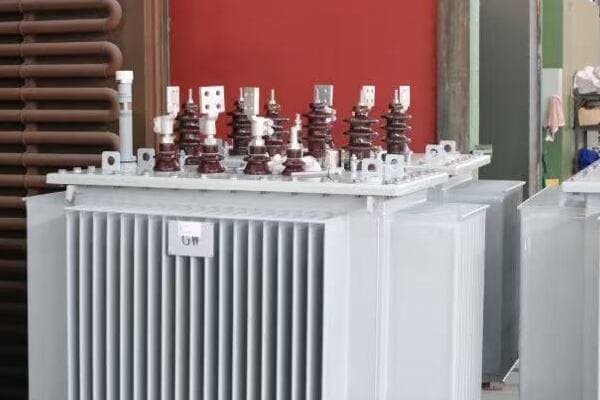
3 Phase Transformers in Campus Installations
Let’s explore how these transformers are applied in educational and governmental settings:
- Managing Diverse Load Profiles
- Supporting Energy Efficiency and Sustainability
- Ensuring Reliability and Safety
- Adapting to Campus Growth and Modernization
- Integration with Smart Campus Initiatives
Managing Diverse Load Profiles
Campus environments have varied power requirements:
- Classrooms and offices with standard power needs
- Research facilities with specialized equipment
- Dormitories and cafeterias with residential-type loads
- Sports facilities with high-power, intermittent demands
I once worked on a project for a large state university where we implemented a network of medium-voltage transformers ranging from 500 kVA to 2500 kVA. This setup allowed for efficient power distribution across diverse campus facilities, from lecture halls to advanced research laboratories.
Supporting Energy Efficiency and Sustainability
Modern campuses often prioritize sustainability:
- High-efficiency transformer designs to reduce energy losses
- Support for on-campus renewable energy sources (e.g., solar panels)
- Integration with energy storage systems for load balancing
During a recent government complex renovation, we installed smart transformers with real-time efficiency monitoring. This system allowed facility managers to optimize power distribution and integrate with the complex’s new solar array, significantly reducing overall energy consumption and carbon footprint.
Ensuring Reliability and Safety
Continuous and safe operation is crucial in educational and governmental settings:
- Redundant systems for critical facilities (e.g., data centers, security systems)
- Integration with backup power systems
- Compliance with safety standards and regulations
In a project for a large community college, we designed a power distribution system with N+1 redundancy for the main academic buildings. This setup ensured uninterrupted power supply even during maintenance or unexpected failures, crucial for maintaining educational continuity.
Adapting to Campus Growth and Modernization
Campuses often undergo expansion and technological upgrades:
- Scalable transformer solutions to accommodate future growth
- Flexible designs to support changing power needs (e.g., increased demand for EV charging)
- Easy integration of new buildings or facilities into existing power infrastructure
Here’s a comparison of transformer features for different campus applications:
| Feature | University Campus | Government Complex | Research Institution |
|---|---|---|---|
| Typical Capacity | 500-2500 kVA | 750-3000 kVA | 1000-5000 kVA |
| Cooling Method | ONAN/ONAF or AN/AF | ONAN/ONAF | ONAN/ONAF or KNAN |
| Special Features | Load diversity management | High security integration | Support for specialized equipment |
| Environmental Considerations | Low noise for residential areas | Energy efficiency focus | EMI shielding for sensitive labs |
| Integration | With campus-wide energy management | With government security systems | With research data networks |
Integration with Smart Campus Initiatives
Modern campuses are increasingly embracing smart technologies:
- Real-time monitoring and control capabilities
- Integration with building management systems
- Support for IoT devices and smart metering
In a recent smart campus project for a technical university, we implemented IoT-enabled transformers. These units provided real-time data on power quality and usage patterns, allowing for predictive maintenance and optimized energy distribution across various departments and facilities.
Key considerations for campus transformer applications:
- Accurate load profiling to handle diverse and evolving power needs
- Scalability to accommodate future campus expansion and technological advancements
- Noise reduction features, especially for transformers near residential or study areas
- Integration capabilities with campus-wide energy management and security systems
- Support for sustainability initiatives and renewable energy integration
In my experience, the successful implementation of 3 phase transformers in campus environments requires a holistic approach. It’s not just about meeting current power needs but anticipating future requirements as campuses evolve. I recall a project for a growing community college where we initially installed oversized transformers with smart monitoring capabilities. This foresight paid off when the campus unexpectedly expanded its STEM facilities, requiring significant additional power. The existing infrastructure easily accommodated this growth without major upgrades.
As we move towards the conclusion of our exploration of use cases, it’s clear that 3 phase transformers play a vital role in the efficient and reliable operation of educational and governmental campuses. Their ability to manage diverse loads, support sustainability efforts, and adapt to changing needs makes them an indispensable component of modern campus infrastructure.
Choosing the Right Transformer for Each Application?
Are you finding it challenging to select the perfect transformer for your specific project? With the diverse range of applications we’ve explored, it’s clear that one size doesn’t fit all when it comes to 3 phase distribution transformers. But how can you ensure you’re making the right choice for your unique needs?
Choosing the right 3 phase transformer involves carefully matching the transformer’s specifications to your application’s requirements. Key factors include power capacity, voltage levels, environmental conditions, efficiency ratings, and specific industry standards. Consider load characteristics, future expansion plans, and integration with existing systems. Proper selection ensures optimal performance, energy efficiency, and long-term reliability for your specific use case.
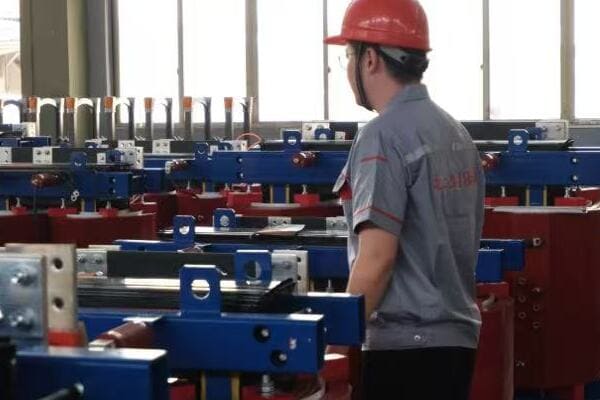
Key Steps in Selecting the Right Transformer
Let’s break down the process of choosing the right transformer:
- Assess Your Power Requirements
- Consider Environmental Factors
- Evaluate Efficiency and Long-Term Costs
- Check Compliance and Standards
- Plan for Future Needs
Assess Your Power Requirements
Start by accurately determining your power needs:
- Calculate total kVA required for all connected loads
- Consider load factor and diversity factor
- Determine required primary and secondary voltages
I once worked on a project where underestimating the load led to an undersized transformer. We had to replace it within a year, causing unnecessary downtime and extra costs. Always err on the side of caution when calculating load requirements.
Consider Environmental Factors
The installation environment plays a crucial role:
- Indoor vs. outdoor installation
- Temperature range and altitude
- Presence of corrosive or humid conditions
- Noise limitations (especially in urban or campus settings)
During a coastal industrial project, we opted for specially designed transformers with enhanced corrosion resistance. This decision significantly extended the transformer’s lifespan in the harsh, salt-laden environment.
Evaluate Efficiency and Long-Term Costs
Consider the total cost of ownership:
- Check for compliance with efficiency standards (e.g., DOE 2016 in the US)
- Calculate energy losses over the transformer’s lifetime
- Factor in maintenance costs and expected lifespan
In a recent commercial building project, choosing a high-efficiency transformer led to significant energy savings over time, justifying the higher initial investment.
Check Compliance and Standards
Ensure the transformer meets relevant standards:
- Industry-specific regulations (e.g., IEEE, IEC, ANSI)
- Safety standards for the specific application
- Environmental and energy efficiency certifications
Here’s a quick reference table for application-specific standards:
| Application | Relevant Standards | Key Considerations |
|---|---|---|
| Industrial | IEEE C57.12.00, IEC 60076 | Short-circuit strength, overload capacity |
| Utility | IEEE C57.12.10, IEC 60076-7 | Voltage regulation, tap changing capabilities |
| Renewable Energy | IEC 61400-1 (Wind), IEC 62548 (Solar) | Harmonics handling, variable load management |
| Commercial/Data Centers | NEMA TP-1, ENERGY STAR | Energy efficiency, low noise operation |
| Oil & Gas | API Std 547, IEC 61892 | Explosion-proof design, corrosion resistance |
| Infrastructure | EN 50329 (Railways), FAA regulations (Airports) | Vibration resistance, EMI shielding |
| Educational/Government | LEED certification requirements | Energy efficiency, smart grid compatibility |
Plan for Future Needs
Think ahead to potential future requirements:
- Consider potential load growth
- Evaluate the possibility of adding renewable energy sources
- Look at options for easy capacity upgrades or replacements
Key tips for selecting the right transformer:
- Always include a safety margin in your load calculations
- Consider the total cost of ownership, not just the initial price
- Consult with manufacturers or experts for complex applications
- Review case studies of similar installations
- Consider conducting site visits to see transformers in similar applications
In my experience, successful transformer selection comes down to a balance of technical requirements, practical considerations, and future-proofing. I’ve seen projects succeed when all these factors were carefully weighed, and struggle when even one was overlooked.
Remember, selecting the right transformer is not just about meeting current needs; it’s about ensuring your power distribution system remains efficient, reliable, and adaptable for years to come. By following these steps and considering all relevant factors, you can make an informed decision that will serve your project well into the future.
CHBEB vs Top Brands: Use Case Fit Comparison Table?
Are you wondering how CHBEB transformers stack up against other top brands in various applications? It’s a common challenge to compare different manufacturers, especially when considering specific use cases. But how can you easily see which brand might be the best fit for your particular project needs?
CHBEB transformers offer competitive solutions across various applications, often providing a balance of performance and cost-effectiveness. When compared to top brands, CHBEB excels in areas like industrial manufacturing and renewable energy projects, offering robust designs and efficient performance. This comparison table helps you quickly assess how CHBEB and other leading brands fit different use cases, aiding in informed decision-making for your specific project requirements.
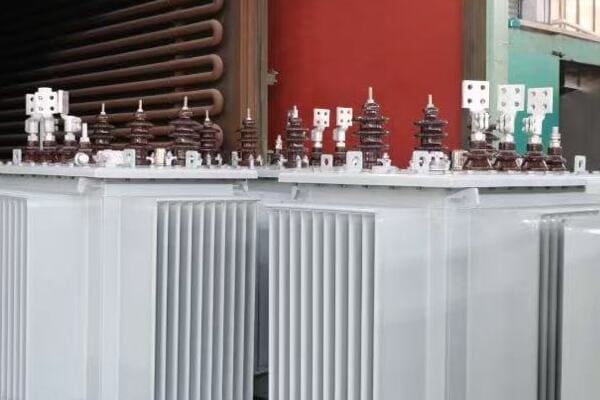
CHBEB and Top Brands Comparison Across Use Cases
Let’s compare CHBEB with other leading brands for various applications:
| Use Case | CHBEB | ABB | Siemens | TBEA | Schneider Electric |
|---|---|---|---|---|---|
| Industrial Manufacturing | ★★★★★ | ★★★★★ | ★★★★★ | ★★★★☆ | ★★★★☆ |
| Utility Substations | ★★★★☆ | ★★★★★ | ★★★★★ | ★★★★★ | ★★★★☆ |
| Renewable Energy | ★★★★★ | ★★★★★ | ★★★★☆ | ★★★★★ | ★★★★☆ |
| Commercial/Data Centers | ★★★★☆ | ★★★★★ | ★★★★★ | ★★★☆☆ | ★★★★★ |
| Oil & Gas/Mining | ★★★★☆ | ★★★★★ | ★★★★★ | ★★★★☆ | ★★★★☆ |
| Infrastructure Projects | ★★★★☆ | ★★★★★ | ★★★★★ | ★★★★☆ | ★★★★☆ |
| Educational/Government | ★★★★★ | ★★★★☆ | ★★★★★ | ★★★★☆ | ★★★★☆ |
Key:
★★★★★ Excellent fit
★★★★☆ Very good fit
★★★☆☆ Good fit
Let’s dive deeper into each use case:
Industrial Manufacturing
CHBEB excels in industrial applications:
- Robust designs for heavy-duty environments
- Competitive pricing for high-capacity units
- Strong after-sales support for industrial clients
I recently worked on a steel mill project where we chose CHBEB transformers. Their ability to handle high loads and withstand harsh conditions, combined with cost-effectiveness, made them an excellent choice for the client.
Utility Substations
While CHBEB performs well, top brands like ABB and Siemens have an edge:
- CHBEB offers reliable solutions for medium-sized substations
- ABB and Siemens lead in advanced monitoring and control features
In a recent substation upgrade, we used a mix of CHBEB and ABB transformers. CHBEB units provided excellent value for standard applications, while ABB’s advanced units were used for critical, high-tech monitoring points.
Renewable Energy
CHBEB shows strong performance in renewable energy projects:
- Specialized designs for solar and wind farm applications
- Competitive in handling variable loads and grid integration
During a large solar farm installation, CHBEB transformers were selected for their efficiency in handling the variable output of solar inverters, offering performance comparable to top-tier brands at a more attractive price point.
Commercial/Data Centers
CHBEB offers solid solutions, though specialized brands may have an edge:
- Good performance in standard commercial applications
- Top brands like Schneider excel in data center-specific features
For a mixed-use commercial complex, we used CHBEB transformers for general power distribution, achieving excellent reliability and efficiency. However, for the complex’s data center, we opted for Schneider units due to their specialized cooling and monitoring features.
Oil & Gas/Mining
CHBEB provides robust options, competing well with specialized brands:
- Strong performance in harsh environment applications
- Top brands may offer more specialized explosion-proof designs
In an onshore oil field project, CHBEB transformers were selected for their durability and cost-effectiveness in standard applications, while we used specialized ABB units for the most critical, hazardous areas.
Infrastructure Projects
CHBEB offers reliable solutions for various infrastructure needs:
- Good performance in railway and airport applications
- Top brands may have an edge in highly specialized or large-scale projects
For a regional airport expansion, CHBEB transformers were used extensively for general power distribution, providing excellent reliability. However, for critical navigation systems, we chose Siemens units for their specialized aviation industry features.
Educational/Government
CHBEB excels in educational and governmental settings:
- Cost-effective solutions for campus-wide distribution
- Strong performance in energy efficiency and smart grid integration
In a recent university campus modernization project, CHBEB transformers were the primary choice. Their smart monitoring capabilities and energy efficiency ratings matched those of top brands, while offering better value for the institution’s budget.
Key takeaways from this comparison:
- CHBEB offers competitive solutions across all use cases, often providing excellent value.
- For highly specialized or critical applications, top brands may have an edge in certain features.
- CHBEB excels particularly in industrial, renewable energy, and educational/government sectors.
- The choice between CHBEB and other brands often comes down to specific project requirements and budget considerations.
In my experience, CHBEB transformers have consistently provided reliable and efficient performance across various projects. While they may not always have the brand recognition of some top-tier manufacturers, their quality and value proposition make them a strong contender in many applications.
Remember, the best choice depends on your specific project needs, budget constraints, and long-term operational requirements. This comparison serves as a starting point, but I always recommend a detailed analysis of your unique situation before making a final decision.
Conclusion
3 phase distribution transformers play a crucial role across diverse applications, from industrial manufacturing to renewable energy projects. Understanding their specific use cases and selecting the right transformer is key to ensuring efficient, reliable, and cost-effective power distribution. CHBEB transformers offer competitive solutions in many applications, often providing an excellent balance of performance and value. When choosing a transformer, consider factors like load requirements, environmental conditions, efficiency, and future scalability. Always align your selection with specific project needs and long-term operational goals.
Remember, at chbeb-ele, we’re not just sharing information – we’re empowering you to be part of the solution in creating a secure, clean, and efficient energy future. Let’s continue this journey together.
Free CHBEB Transformer Catalog Download
Get the full range of CHBEB transformers in one catalog.
Includes oil-immersed, dry-type, pad-mounted, and custom solutions.
Quick Message
Request A free quote
We'd like to work with you
- +86 15558785111
- [email protected]
- +86 15558785111
What We Do
CHINA BEI ER BIAN (CHBEB) GROUP, with 218 million in registered capital, originated from Beijing Beierbian Transformer Group. Headquartered in Beijing for R&D, it operates major production bases in Nanjing and Yueqing, producing high-quality products.
Latest Product
address
BeiJing
No 3,RongJing East Road,BeiJing Economic Technological Development Area,BeiJing,China
JiangSu
No 7️Xiangfeng Road,Jiangning,NanJing,JiangSu,China
WenZhou
No.211, Wei 16 Road, Industrial Zone, Yueqing, Wenzhou, Zhejiang, China.
XiangYang Industrial Zone ,YueQing,WenZhou,ZheJiang,China
contact us
- [email protected]
- +86 13057780111
- +86 13057780111
- +86 15558785111
Copyright © Bei Er Bian Group


